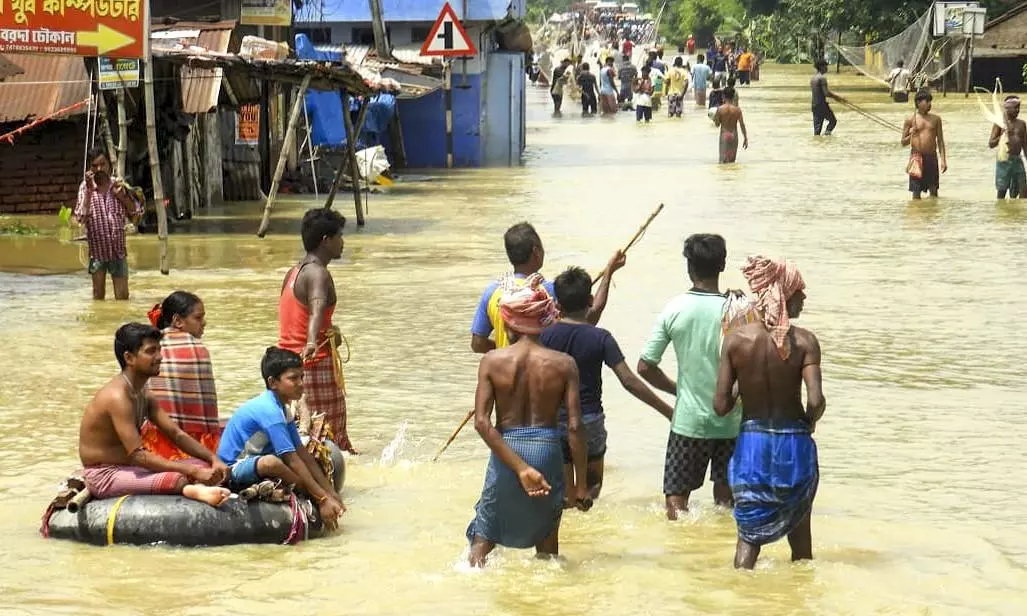
India has paid a steep climate price and must act now to avoid worse
With $170 billion in losses and over 80,000 lives lost, India must shift from crisis response to climate resilience or risk deeper human and economic costs

India faces a severe climate crisis that carries enormous human and financial costs. A Germanwatch Climate Risk Index report has showed that India suffered nearly $170 billion (Rs 15.07 lakh crore) in damages from extreme weather between 1995 and 2024. It ranks ninth among the world’s countries most affected by floods, heat waves, and cyclones.
The index, launched on November 11 at the UN climate summit (COP30) in Belem, Brazil, analysed almost 10,000 weather events over 30 years and found over 832,000 deaths globally linked to such disasters.
For India, the toll goes beyond money lost, with more than 80,000 lives claimed and countless families displaced. Flooding sweeps away homes, intense heat strains communities, and storms wreak havoc on entire regions.
86 million displaced worldwide
The human impact is critical. The United Nations High Commissioner for Refugees reported on November 10 that over 86 million people are displaced worldwide due to climate risks, with nearly three-quarters living in vulnerable countries like India. Displacement due to climate shocks worsens poverty and disrupts social fabric.
Also read: As COP30 shows, rich nations and elites still block climate progress
Floods affect people in India the most, while storms exact the greatest economic damage, according to Laura Schafer, head of international climate policy at Germanwatch. Repeat disasters leave communities with little time to recover, deepening poverty and vulnerability.
Uneven financial support
Global funding disparities make adaptation harder. The World Meteorological Organization noted that fragile countries get just $2 (Rs 177) per person each year for adaptation, while wealthier nations receive more than $160 (Rs 14,180). This uneven support limits India’s ability to prepare for growing risks.
Investment in prevention is vital. The Coalition for Disaster Resilient Infrastructure (CDRI), led by India, says every dollar spent on resilient infrastructure can save $4 to $15 (Rs 350–1,330) in avoided losses. Yet most funds still focus on relief rather than preventing disasters.
Also read: COP30: India’s climate mitigation pledges are all rhetoric, little substance
Experts warn infrastructure losses worldwide could reach as high as $850 billion (Rs 75.34 lakh crore) annually. The United Nations Office for Disaster Risk Reduction estimates resilience investments will need to total $10 trillion (Rs 886.36 lakh crore) globally by 2050 to stem the tide of losses.
Ensuring real risk reduction
India’s resilience efforts have improved, supported by better government programmes than earlier. However, experts urge more thorough evaluation to ensure real risk reduction, especially for vulnerable and marginalized communities. Inclusive approaches are needed that combine policies, finance and local knowledge.
The communities that are hit the hardest often lack resources like insurance, credit or disaster warnings. Studies show that microfinance, safety nets, and early warning systems save lives, but these remain unevenly available.
Need to move beyond crisis response
The index’s $170-billion tally is a potent reminder of the urgent need for action. Delays in investing in resilience risk far higher costs in the future, both in economic terms and human suffering.
Also read: Unseasonal rains in Gujarat wreak havoc on crops; farmers grapple with major losses
As the UN summit unfolds, governments face clear choices. Protecting India’s people and economy from increasing climate shocks requires moving beyond crisis response to proactive planning and investment. The future depends on whether India can turn the tide for its most vulnerable and safeguard its progress.
(The author is reporting from the ongoing UN climate summit, COP30, in Belem, Brazil)

